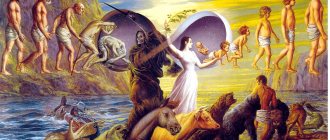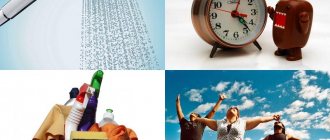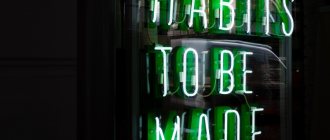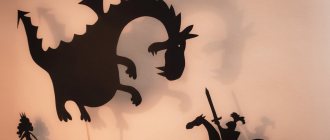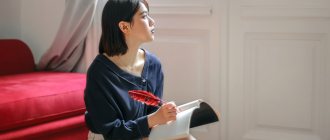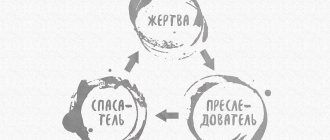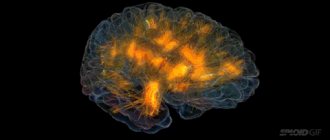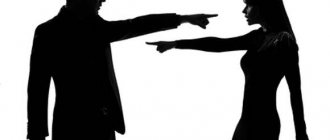"Universe 25" is an experiment by John Calhoun in which the author tried to create a mouse paradise. His charges had unlimited supplies of water and food, the researcher made sure that the mice did not get sick, the individuals had a large territory for breeding, and were isolated from predators. However, ideal living conditions ultimately led to the death of the colony.
Within the framework of the article, we will try to answer such questions about “Universe-25” as:
- Why did the mouse paradise become uninhabitable?
- What conclusions can a modern person draw from the experiment with the Universe-25 mice?
Description of the Universe-25 experiment
In 1972, John Calhoun carried out an experiment called Universe-25. The number in the title means that before this study, the author had already attempted 24 times to create a universe with ideal conditions for mice in experiments. His experience is also known under such names as “Planet-25”, “Mouse Paradise”.
The goal of the Universe-25 experiment is to study the effect of population density on the behavior of white mice in conditions of complete abundance.
For the Universe-25 experiment with rats, the author used a tank with a diameter of 2 meters. Numerous nests for females were created in it.
A shortage of space for comfortable living in Calhoun’s Universe-25 experiment could only occur if the population size exceeded 3800. Throughout the entire experiment, an optimal temperature of +20 °C was maintained. The scientist monitored the cleanliness of the tank and cleaned it regularly. For the experimental animals of John Calhoun's universe, any stress factors were excluded.
Throughout the Universe-25 experiment, the scientist kept a detailed diary. Today you can find a description of the experiment with the mouse paradise “Universe-25” not only in English, but also in Russian.
Bibliography[edit | edit code]
Books[edit | edit code]
- Calhoun, John. Crowding and Social Behavior in Animals. — Anchor Books, 1947-1948.
- Calhoun, John. Environment and Population: Problems and Adaptation: An Experimental Book Integrating Statements by 162 Contributors. - Praeger, 1983. - P. 486. - ISBN 0-275-90955-7.
Articles[edit | edit code]
- Calhoun, John. The Study of Wild Animals under Controlled Conditions // Annals of the New York Academy of Sciences. - 1950. - Vol. 51. - P. 113–22.
- Calhoun, John. The Social Aspects of Population Dynamics / American Society of Mammalogists // Journal of Mammalogy. - 1952. - Vol. 33, no. 2. - P. 139–159. — DOI:10.2307/1375923. - JSTOR 1375923.
- Calhoun, John. A Behavioral Sink // Roots of Behavior / ed. by Eugene L. Bliss. - New York: Harper & Brothers, 1962. - Ch. 22.
- Calhoun, John. Population density and social pathology // Scientific American. - 1962. - Vol. 206, no. 2. - P. 139–148. - PMID 13875732.
- Calhoun, John. Plight of the Ik and Kaiadilt is seen as a chilling possible end for Man // Smithsonian Magazine. - 1972. - Vol. 3. - P. 27–32.
Phases A, B and C
The Universe-25 experiment took place in several stages, which the author called phases.
Initially, Calhoun placed 4 pairs of healthy white mice in the prepared tank. The maximum number of mice in Universe-25 reached 2200. Individuals quickly adapted to their new habitat. Favorable conditions contributed to the accelerated reproduction of animals.
Calhoun called the period of mice’s adaptation to new living conditions in the “Universe-25” experimental tank phase A.
The birth of the first offspring in the experiment marked the beginning of phase B in the mouse paradise of Universe-25. In his notes, the author writes that every 55 days the population of rodents in the tank doubled.
From day 315 of the experiment, the rate of reproduction began to decrease: now the number of individuals doubled every 145 days.
In John Calhoun’s “Universe-25” experiment, the total population of the mouse colony numbered 600 individuals by this time. Signs of sociality appeared and a status hierarchy of rodents took shape. The author assumed that this was due to a reduction in the free territory, and wrote in his diary that the 25th mouse paradise had entered phase C.
The organizer of the Universe-25 mouse experiment at this phase of the experiment took 4 pairs of mice from the overgrown colony and transplanted them into a separate tank of exactly the same size and under exactly the same conditions in order to compare their behavior with that demonstrated by the first 4 pairs. taken for the project.
Unlike the first pairs, the second batch behaved completely differently. It was not possible to recreate the original image of the universe in an experiment with these rats. Individuals taken from the experimental colony did not attempt to mate and were passive. The experimenter's observations of them made it possible to establish that they were only satisfying their needs for food and sleep. There were no changes in their behavior over time. Having reached old age, all 8 mice died without breeding.
To extend the Universe 25 mouse experiment, the researcher transferred several more mice into an empty tank, but their behavior was just as lethargic. Reproductive activity was not observed in them. Living in ideal conditions, the mice died.
Distribution of social roles
After 315 days of stay in experimental conditions, the rats in “Universe-25” developed the following social roles:
- Les Misérables. As a rule, they were young mice who failed to fit into the hierarchy of the mouse paradise created in Universe-25. These individuals were often attacked by their relatives, as evidenced by bite marks on their bodies and torn out shreds of fur. The outcasts were herded into the center of the tank. Rejected males became timid and did not protect their pregnant females from the attacks of old mice.
- Pregnant anxious females. They felt defenseless as a result of the fact that their rejected males were broken and could not demonstrate aggression to other individuals. Driven by the instinct to protect their offspring, females often began to enter into conflicts themselves. However, their warlike attitude was directed not only towards potential enemies, but also towards their own newborn cubs.
Cases of females killing their own offspring became a common practice. After this, these mice became hermits and refused to procreate, choosing the social role of single females. This caused a decrease in the birth rate, and the mortality rate among young individuals grew rapidly, since the mouse paradise created by the author of the Universe-25 experiment became hell for the inhabitants.
Results
The experiment demonstrated an interesting paradox. Improving the living conditions of rats did not lead to the maximum filling of the territory, but to the destruction of the population. Calhoun considered the key point in this situation to be a decrease in mortality and an increase in life expectancy: old males, who enjoyed life and pushed younger ones out of the social space, including their own children, themselves launched the mechanism of death of their community.
Exactly the same outcome, according to Calhoun, awaits humanity, which has embarked on the path of civilization. It turns out that raising the standard of living, developing medicine and education, abandoning wars and violence in general, and limiting the birth rate is the path to the destruction of humanity. Evidence of the decline of humanity, according to his theory, is the appearance in society of a large number of childfree and homosexual people. And attempts to eliminate violence lead to the opposite result - an increase in aggressive behavior, including towards children.
Start of phase D
J. Calhoun associated the transition of the Universe-25 project to the last phase D with the appearance in the colony of a special caste of mice, which the researcher called “beautiful” because there were no bloody marks of teeth or abrasions on their bodies. He classified this species as males who refused to take part in fights and did not participate in the fight for territory and females. They were socially passive and had no interest in mating. As a rule, they were busy eating, sleeping, and also cleaning their skins. They resembled the famous mythological hero Narcissus. The scientist was surprised that this caste was rapidly increasing over time.
At this stage of the Mouse Paradise mouse experiment, the average age of the mice was 776 days. At this age, rodents are no longer capable of reproduction. Young mice died en masse, and pregnancies in females gradually dropped to 0.
The mouse paradise of Universe-25 has turned into a colony of deviant homosexuals and cannibals. They demonstrated unmotivated aggression. Despite sufficient food and water, females killed their young instead of raising offspring. The population of the colony was rapidly declining.
The last inhabitant of the mouse paradise created in Universe-25 died on the 1780th day of the experiment.
John Calhoun's Conclusions
Once again, the “Mouse Paradise” experiment with mice failed.
Despite the fact that J. Calhoun carried out all his experiments on mice, he transferred the conclusions of Universe-25 to human society, the main ones being the following points:
- Population growth can only occur up to a certain limit, then it gives way to a natural decline. The result of the development of a population will be its extinction. This is not affected by the size of the habitat.
- In crowded and cramped conditions, a person’s deviant destructive behavior is activated.
- It is impossible to build heaven on Earth. The history of Russia includes numerous attempts to create an ideal political system, but they all ended in failure.
- A sign of human degradation is his desire for excess and excessive comfort. By taking oneself out of the comfort zone, a person develops as a person.
- Spiritual death is primary. It is characterized by a person’s refusal to engage in complex behavior patterns. After the death of the soul, a person loses interest in any activity. Its existence comes down to satisfying biological needs. After this, physical death occurs after some time.
The Universe-25 experiment proved this.
Comparison of Universe-25 with people
“Universe-25” was criticized by representatives of psychology and sociology, but most researchers today recognize the relevance of the results of J. Calhoun’s experiment. The human caste has existed for many centuries only because our living conditions are far from ideal. Unlike rats, people can purposefully shape their character and influence the formation of the character of loved ones.
Universe 25 is not a myth. An analogy of the study with human society can be seen in the fact that idealizing living conditions does not contribute to personal development and leads to natural degradation.
In addition, the social roles identified by John Calhoun in the Universe-25 mouse experiment also exist in human society. So, for example, the elderly inhabitants of the colony can be compared in social status with modern oligarchs who manage automated systems.
Naturally, there are skirmishes and confrontations between oligarchs (elderly) and outcasts - people who, for one reason or another, have fallen out of the social structure of society - their main occupation is idleness and criticism of the authorities. This conclusion of the Universe-25 experiment has been criticized more often than others.
There are also “beautiful” people in human society. These are modern boys and girls who pay a lot of attention to their appearance. In other words, they are engaged in narcissism: they like to take selfies and post their own photos on social networks. They do this in order to get likes from users.
Unfortunately, single females, revealed in an experiment on mice in Universe-25, are not uncommon in our society. They are mothers who commit cruelty and inhumane acts against their own children. In addition, women who sacrifice family and motherhood in favor of a career fall into the same category.
That is why it is possible to transfer the results of the Universe-25 experiment to modern Russia.
Prerequisites and purpose of the study
The name of the study speaks for itself: 25 is the serial number of the experiment. Before organizing such a large-scale study, Calhoun observed rats in their natural environment, while constructing a fence. The large size of the fenced space (930 square meters) made it possible to house five thousand rats; however, for some reason the rats did not reproduce to such a large number: the maximum number of individuals did not exceed 200, and their average number for the entire observation period was at the level of 150. At the same time, the rats did not spread evenly throughout the territory, but formed several colonies, which numbered 12 individuals and were located at some distance from each other. Calhoun concluded that this was the best number for rats, and that more would lead to the disintegration of the group.
In 1958, the researcher organized an experiment in laboratory conditions. He built a training ground called "rat paradise"
.
The room was unlimitedly supplied with food and water and was isolated from the outside world. Its area was 12 square meters, it was divided into four compartments, running one after another; the central compartments communicated with the neighboring ones. To avoid overpopulation, Calhoun removed excess young rats as soon as the population reached a certain number.
In this testing area, the rats were distributed in a curious way. The outer compartments were captured by the strongest males, who each had several females in their harems. They expelled younger and weaker males to the central compartments. The individuals huddled in the central compartments demonstrated deviant behavior: they showed increased aggressiveness, tried to attack each other, mated with everyone, regardless of gender, or refused to mate at all, and ate newborn rat pups.
In these studies, Calhoun attempted to predict the future for human society. During those years, the developed world experienced a sharp increase in the standard of living of the population; however, the population grew no less rapidly. Mass “reproduction” was observed primarily in developing countries, from where migrants began to travel to the countries of the “first world”; but childbearing also increased among the indigenous people of Europe and North America.
